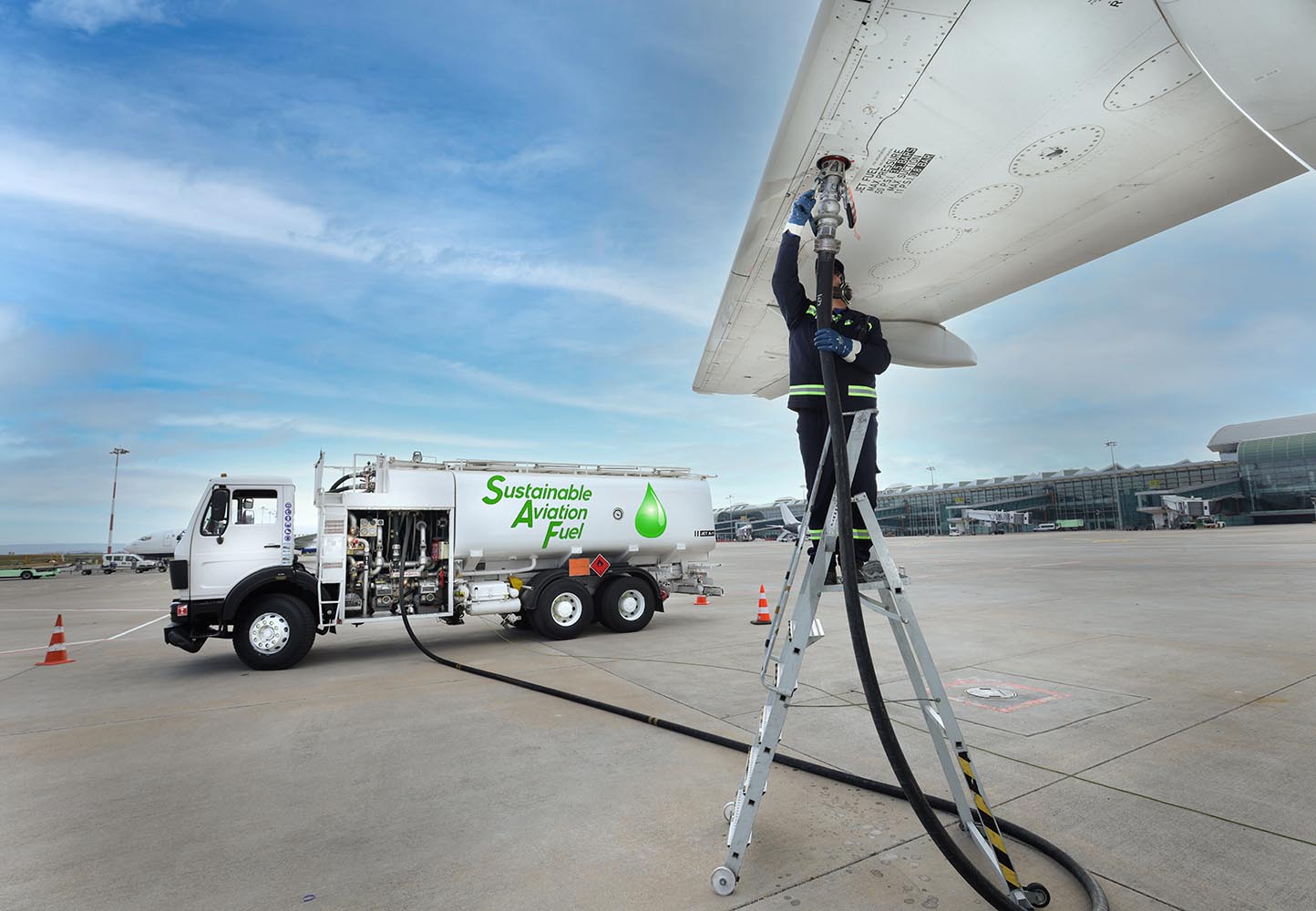
Aviation industry’s role in scaling sustainable aviation fuel production
As airlines globally commit to ambitious decarbonisation targets, the aviation industry’s focus on sustainable aviation fuel (SAF) is intensifying. A recent report from global management consulting firm McKinsey highlights the critical role that the aviation sector can play in scaling SAF production to meet rising demand and achieve net-zero emissions by 2050. This comprehensive analysis delves into the current state of SAF, projected demand and supply, strategies for scaling production, challenges, opportunities, and the future outlook for the aviation industry’s transition to sustainable fuels.
Sustainable aviation fuel, which can reduce greenhouse gas emissions by up to 80% compared to traditional fossil kerosene, is pivotal for the industry’s decarbonisation efforts. Despite its potential, the SAF industry is still in its infancy. As of 2024, global SAF production capacity stands at approximately 1.5 million metric tons (Mt), which is only about 0.5% of the total jet fuel needs. This limited production capacity poses significant challenges as airlines strive to meet their sustainability commitments.
Projected demand and supply
The demand for SAF is expected to surge due to regulatory mandates and voluntary commitments from airlines. By 2030, mandated global demand for SAF is projected to reach around 4.5 million Mt, with total demand—including voluntary commitments—potentially exceeding 20 million Mt. However, current supply projections indicate significant shortfalls unless production capacity is dramatically increased.
According to McKinsey’s report, the aviation industry will face a substantial supply gap if additional production volumes are not realised. The report estimates that announced SAF production projects could increase annual global capacity to between 11 million and 25 million Mt by 2030. However, these projections come with considerable uncertainty, as not all announced projects may materialise, and technological and financial challenges could impede progress.
To bridge the gap between supply and demand, various stakeholders in the aviation industry are adopting multiple strategies:
Equity Investments: Airlines are investing directly in SAF production projects. For instance, United Airlines’ Sustainable Flight Fund has accumulated over USD200 million, investing in companies like Svante and Dimensional Energy to expand SAF production. This approach helps secure a consistent supply of SAF and supports the overall growth of the industry.
Offtake Agreements: Long-term agreements between airlines and SAF producers can secure supply and attract investment. Southwest Airlines’ 20-year deal with USA BioEnergy exemplifies this strategy, providing a stable demand base for producers. Such agreements are crucial for de-risking investments and ensuring a steady market for SAF.
Partnerships and Consortia: Collaborative efforts, such as the Sustainable Aviation Buyers Alliance (SABA), pool demand from multiple stakeholders, including airlines, corporate customers, and fuel providers. Spearheaded by the Rocky Mountain Institute (RMI) and the Environmental Defense Fund (EDF), SABA’s mission is to drive the aviation industry towards net-zero emissions by promoting the use of SAF. This collective approach helps create synergies and scale production. For example, SABA’s April 2024 announcement involves offtake agreements with four fuel providers, three airlines, and 20 corporate aviation customers, demonstrating the power of collaboration in driving SAF adoption.
Government Support and Policies: Regulatory frameworks and incentives are crucial for fostering SAF market growth. Policies mandating SAF usage and providing financial incentives for production can drive industry-wide adoption and investment. For instance, Lufthansa Group introduced an environmental cost surcharge in June 2024, applying it to all departures from EU-27 countries, showcasing how regulatory measures can support the transition to SAF.
Challenges and opportunities
The path to scaling SAF production is fraught with challenges, including high production costs, technological uncertainties, and the need for substantial capital investment. SAF currently costs about three times more than fossil kerosene, posing financial challenges for airlines operating on slim margins. This cost differential underscores the need for continued innovation and economies of scale to drive down prices and make SAF more competitive.
However, the potential benefits are significant. Increasing SAF production not only supports the aviation industry’s decarbonisation goals but also promotes technological innovation and economic growth within the sector. By fostering a robust SAF ecosystem, the industry can mitigate risks, attract investment, and drive down costs through economies of scale.
Financial instruments play a crucial role in supporting the expansion of SAF production. Apart from equity investments and offtake agreements, SAF funds have emerged as a new category of sustainability-related investment vehicles in aviation. These funds, often set up by consortia of investors, provide the necessary capital for early-stage projects and help de-risk investments.
For example, United Airlines’ investment vehicle, known as the Sustainable Flight Fund, has grown rapidly since its launch in February 2023. With more than USD200 million committed from more than 20 corporate partners, including Air Canada, Boeing, and JPMorgan Chase, the fund aims to secure a consistent supply of SAF and expand the overall SAF supply chain. This collaborative approach leverages the expertise and financial strength of multiple stakeholders to drive innovation and scale production.

Future outlook
The next decade will be crucial for the aviation industry’s transition to sustainable fuels. Significant investments in SAF production capacity, technological advancements, and supportive policies will be essential to meet the projected demand and achieve environmental targets. Collaboration among airlines, fuel producers, investors, and policymakers will be key to unlocking the full potential of sustainable aviation fuel.
Scott Kirby, CEO of United Airlines, emphasises the importance of creating supply to meet demand. “The challenge is not that supply is limited; the issue is creating supply. The only way to get SAF is to fund and build the companies that are creating SAF.” This statement highlights the critical need for continued investment and innovation to build a robust SAF ecosystem.
In summary, the aviation industry’s role in scaling sustainable aviation fuel production is vital for meeting decarbonisation goals and ensuring a sustainable future for air travel. Through a combination of equity investments, offtake agreements, partnerships, and supportive policies, the industry can overcome challenges and drive significant advancements in SAF production. The collaborative efforts of airlines, fuel producers, investors, and policymakers will pave the way for a greener, more sustainable aviation industry.
For more detailed insights, you can read the full McKinsey report here.








